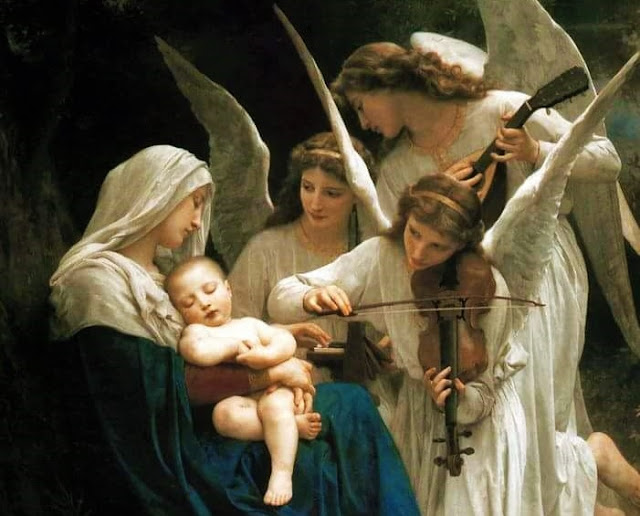Song of the Angels by William Adolphe Bouguereau 1881
This life-size painting, a serene vision of angels serenading the sleeping Jesus in the arms of a graceful young Mary, is one of the most important works by Bouguereau in the United States.
Bouguereau's flawless technique, graceful compositions, and poignant portraits made him one of the most popular French artists of the late 1800s. Crowds thronged the annual Salon to see his latest canvases, and the wealthy vied to add them to their collections. And Bouguereau remains immensely popular with museumgoers to this day.
Chief paintings conservator Mark Leonard spent months studying, cleaning, and restoring Virgin of the Angels. He removed the old varnish that was dirtying the angels' wings and yellowing Mary's blue cloak, revealing the clarity of the original colors (see images below).
After cleaning, Virgin of the Angels was installed in the Getty Center's West Pavilion alongside two other versions of the work from private collections, a preparatory oil sketch and a later, half-size replica from Bouguereau's own hand. Treatment of both the original and the replica in the paintings conservation studios revealed how precisely the smaller version mirrors its model—even down to the number of brushstrokes. It was common for 19th-century artists to make replicas of their successful compositions, but the precision of Bouguereau's replicas is unique. Leonard is currently working with digital imaging specialists to compare the two works in minute detail.
The installation of the three versions of Virgin of the Angels also revealed how painstakingly Bouguereau planned his paintings. The artist sketched the composition in oil and made detailed drawings of each figure before committing to a final design. Once he began painting, he allowed few changes. X-rays of Virgin of the Angels conducted as part of the treament reveal almost no changes or corrections; the artist only shifted the position of a few pegs on the violin played by the angel at the center.



Comments
Post a Comment